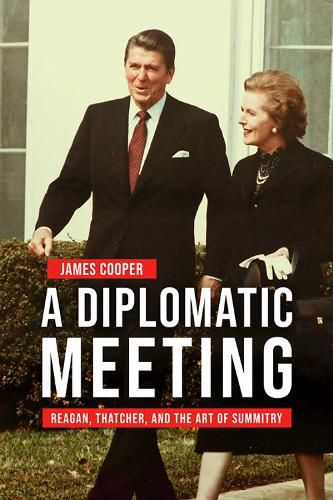Readings Newsletter
Become a Readings Member to make your shopping experience even easier.
Sign in or sign up for free!
You’re not far away from qualifying for FREE standard shipping within Australia
You’ve qualified for FREE standard shipping within Australia
The cart is loading…






They were known as political soulmates who shared a special relationship . Grounded in similar democratic systems, common historical discourses, and sustained military alliance through several of the twentieth century’s most contentious conflicts, British prime minister Margaret Thatcher and the American president Ronald Reagan shared a deep respect, admiration, and friendship, as well as similar ideologies. Many analysts and historians recycle a popular conception of the two New Right leaders joined at the hip politically, yet their relationship was more complex and nuanced.
Drawing on a host of recently declassified documents from the Reagan-Thatcher years, A Diplomatic Meeting: Reagan, Thatcher, and the Art of Summitry, provides an innovative basis to understand the development and nature of the relationship between the two leaders. Author James Cooper boldly challenges the popular conflation of the leaders’ platforms and proposes that Reagan and Thatcher’s summitry demonstrated that foreign policy was not distinct from domestic policy: there was just policy, and the related politics of it. Summits, therefore, were a significant opportunity for world leaders to further their own domestic agenda. Cooper utilizes the relationship between Reagan and Thatcher to demonstrate that summitry politics transcended any distinction between foreign policy and domestic politics - a major objective of Reagan and Thatcher as they sought to consolidate power and implement their domestic economic programs in a parallel quest to reverse notions of their countries’ decline .
This unique and significant study about the making of the Reagan-Thatcher relationship uses their key meetings as avenues of exploration and argues that there is fluidity between the domestic and international spheres, which is underappreciated within existing interpretations of the leaders’ relationship, Anglo-American relations and, more broadly, in the realm of international affairs.
$9.00 standard shipping within Australia
FREE standard shipping within Australia for orders over $100.00
Express & International shipping calculated at checkout
They were known as political soulmates who shared a special relationship . Grounded in similar democratic systems, common historical discourses, and sustained military alliance through several of the twentieth century’s most contentious conflicts, British prime minister Margaret Thatcher and the American president Ronald Reagan shared a deep respect, admiration, and friendship, as well as similar ideologies. Many analysts and historians recycle a popular conception of the two New Right leaders joined at the hip politically, yet their relationship was more complex and nuanced.
Drawing on a host of recently declassified documents from the Reagan-Thatcher years, A Diplomatic Meeting: Reagan, Thatcher, and the Art of Summitry, provides an innovative basis to understand the development and nature of the relationship between the two leaders. Author James Cooper boldly challenges the popular conflation of the leaders’ platforms and proposes that Reagan and Thatcher’s summitry demonstrated that foreign policy was not distinct from domestic policy: there was just policy, and the related politics of it. Summits, therefore, were a significant opportunity for world leaders to further their own domestic agenda. Cooper utilizes the relationship between Reagan and Thatcher to demonstrate that summitry politics transcended any distinction between foreign policy and domestic politics - a major objective of Reagan and Thatcher as they sought to consolidate power and implement their domestic economic programs in a parallel quest to reverse notions of their countries’ decline .
This unique and significant study about the making of the Reagan-Thatcher relationship uses their key meetings as avenues of exploration and argues that there is fluidity between the domestic and international spheres, which is underappreciated within existing interpretations of the leaders’ relationship, Anglo-American relations and, more broadly, in the realm of international affairs.